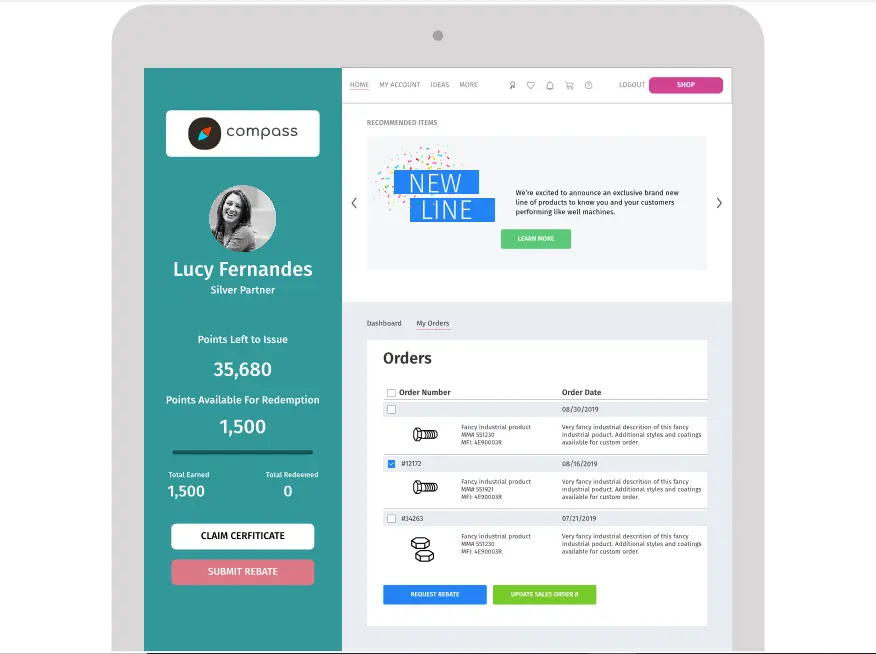In questa pagina
Alcune delle sfide comuni che le risorse umane devono affrontare sono quelle di attrarre e trattenere i migliori talenti del settore. Un modo efficace per farlo è la gamification. Si tratta di applicare il pensiero orientato al gioco a vari aspetti non ludici dell'organizzazione, come la formazione dei dipendenti, le valutazioni delle prestazioni e i controlli di conformità.
I vantaggi della gamification in ambito aziendale sono molteplici. Sfrutta il divertimento, le ricompense e i riconoscimenti per attirare i dipendenti. Questo, a sua volta, può motivarli a ottenere prestazioni migliori e aumentare il loro impegno nel processo. Uno studio di Statista dimostra infatti che l'89% dei dipendenti ritiene di poter ottenere risultati migliori grazie alla gamification. Oggi esistono diversi strumenti e software di gamification per aiutarvi a incorporare la gamification sul posto di lavoro. Abbinandoli a questi suggerimenti, sarete presto in grado di trarre il massimo vantaggio da questa strategia.
Come gamificare il luogo di lavoro?
I vantaggi della gamification sul posto di lavoro vanno ben oltre le risate e i nomi delle squadre. Ecco alcuni suggerimenti per adottare la gamification sul posto di lavoro.
1. Rendere gli obiettivi chiari e trasparenti
Prima che voi e i vostri dipendenti possiate lasciarvi trasportare dal divertimento e dai giochi, stabilite innanzitutto degli obiettivi chiari. Stabilite perché la gamification è importante e cosa volete ottenere. Da lì, potrete decidere che tipo di gioco implementare per raggiungere i vostri obiettivi. Naturalmente, una volta stabiliti i vostri obiettivi, dovete comunicarli chiaramente ai vostri dipendenti. Ricordate loro che questi giochi non hanno solo uno scopo ludico. Mantenete le vostre attività allineate con gli obiettivi dell'azienda. E assicuratevi che questi obiettivi siano trasparenti per il resto dei vostri dipendenti.
Stabilire delle tappe fondamentali è anche un buon modo per motivare i dipendenti. Dà loro un senso di realizzazione, rendendo i giochi ancora più gratificanti e rilevanti.
2. Spiegare le regole e i processi del gioco.
Tutti i giochi hanno una serie di regole che i partecipanti devono seguire. Pertanto, conoscere le linee guida del gioco è essenziale affinché i vostri dipendenti possano partecipare pienamente alle vostre attività. Oltre agli obiettivi, è necessario comunicare le regole e le procedure del gioco a tutti coloro che possono partecipare. Ciò include i criteri per sapere se hanno vinto, i premi alla fine, le linee guida per la qualificazione e la squalifica, la durata dell'attività e ciò che devono fare per vincere. Ogni volta che si applica la gamification, le regole e i processi devono essere chiarissimi per tutti i partecipanti. Questo assicura che tutti abbiano un'idea di come funziona. Allo stesso modo, avranno un riferimento a cui fare riferimento durante l'intera attività. In questo modo, tutti competeranno in modo equo.
3. Iniziare in modo semplice
A volte, meno è meglio, soprattutto quando si è solo all'inizio. Per quanto riguarda la gamification, è preferibile mantenere tutto semplice. Ciò significa meccaniche di facile comprensione e attività brevi con payoff corrispondenti. In questo modo, potrete testare quali funzionano e quali no senza sprecare troppo tempo, costi ed energie in processi inefficienti. Sfide semplici come la competizione per il "più alto indice di soddisfazione settimanale dei clienti", il "più alto numero di incidenti chiusi nella settimana", la "perfetta presenza mensile" o il "più alto raggiungimento della quota del mese" possono essere un buon inizio. Sono facilmente misurabili con i numeri e i dipendenti non devono aspettare a lungo per ottenere i loro premi. Allo stesso modo, sono tutti obiettivi raggiungibili e in linea con gli obiettivi aziendali. Fare un passo alla volta permette ai dipendenti di adattarsi e di acquisire fiducia lungo il percorso. In questo modo, inoltre, avranno qualcosa di cui gioire in futuro. Potreste anche studiare come implementare un software di gamification sul posto di lavoro, per facilitare l'inserimento della strategia nelle vostre operazioni aziendali.
4. Fornire premi e incentivi allettanti
La gamification nelle aziende va di pari passo con un sistema di premi e incentivi per i dipendenti. Questi possono essere sotto forma di riconoscimenti, gettoni o entrambi. Questo sistema darà ai vostri dipendenti la spinta e la motivazione necessarie per partecipare alle vostre attività.
Secondo un recente studio, l'83% dei dipendenti si sente motivato a migliorare le prestazioni e a lavorare di più quando sa che alla fine li aspetta una ricompensa. Inoltre, la promozione di un'atmosfera amichevole e competitiva dà loro un motivo per continuare a migliorarsi, invece di compiacersi nel lungo periodo.

Dovete però assicurarvi che i vostri premi siano desiderabili per i vostri dipendenti. Ad esempio, per concorrere al titolo di "miglior dipendente dell'anno" sarebbe necessario qualcosa di più di un semplice distintivo e di una rapida pacca sulla spalla. Un gesto così semplice per un risultato eccezionale potrebbe non essere sufficiente per invogliare i dipendenti a lavorare sodo per il titolo. Optate invece per un weekend in un resort o per un bonus di fine anno.
5. Monitorare e seguire i progressi
Come per tutte le iniziative, dovete valutare se le vostre attività hanno successo e sono efficaci. A tal fine, è possibile monitorare e seguire costantemente i progressi di ogni gioco. Utilizzando fogli di calcolo, moduli di indagine o software, potete verificare in che modo questi giochi influenzano le prestazioni dei vostri dipendenti. Li sta motivando a lavorare di più? Sono diventati più produttivi rispetto a prima dell'implementazione della gamification? Vi aiuta a raggiungere gli obiettivi aziendali? Oltre all'impatto sulla produttività dei dipendenti, potete anche verificare se le vostre attività piacciono ai vostri dipendenti. In questo modo, potrete lavorare per migliorare la gamification o aumentare i premi in futuro.
6. Sfruttare i dati
Oggi le aziende sono sempre più orientate ai dati. Con i vari strumenti e software disponibili, è possibile estrarre e analizzare facilmente i dati da diversi aspetti della propria attività. E sì, è possibile raccogliere dati cruciali anche dalla gamification. Implementando la gamification nel vostro ambiente di lavoro, potete scoprire i punti di forza e di debolezza della vostra forza lavoro. Allo stesso modo, questo vi permette di identificare le aree da migliorare e il modo migliore per affrontarle. Queste informazioni possono aiutarvi a creare strategie e piani più intelligenti per la vostra azienda. Inoltre, possono aiutarvi a costruire una cultura forte per la vostra organizzazione, in modo da renderla pronta per il futuro. L'uso della gamification nelle risorse umane, ad esempio, può fornire una grande quantità di conoscenze quando si tratta di gestire i dipendenti. Potrete scoprire i modi migliori di utilizzare la gamification per aumentare il coinvolgimento dei dipendenti, i metodi di comunicazione più efficaci, le competenze comuni da formare per i vostri dipendenti e molto altro ancora.
7. Mescolare
Una volta introdotta la gamification sul posto di lavoro, la sfida è come mantenere queste attività senza annoiare i dipendenti nel lungo periodo. Dopo tutto, partecipare alla stessa competizione o allo stesso gioco può perdere il suo fascino. Ravvivate le vostre attività aggiungendo qualcosa di tanto in tanto. Potete farlo cambiando il livello di difficoltà (ma rendendolo comunque raggiungibile), introducendo nuove regole o elementi nei giochi o cambiando completamente il gioco.
Perché tanta serietà?
Chi dice che non ci si può divertire al lavoro? Incorporare la gamification nel vostro ufficio può cambiare drasticamente il modo in cui i vostri dipendenti lavorano. Fornisce loro un motivo per cui devono migliorare le loro prestazioni e migliorarsi nel corso del lavoro. Inoltre, li fa sentire apprezzati per il tempo e l'impegno che dedicano all'azienda.
Tenete a mente questi suggerimenti se state pensando di introdurre la gamification nel vostro posto di lavoro. In questo modo si può agevolare una transizione più agevole da un'impostazione tradizionale a un ambiente di lavoro più dinamico e divertente all'interno dell'ufficio. Potete anche utilizzare i vari software disponibili per creare attività olistiche per i vostri dipendenti.







